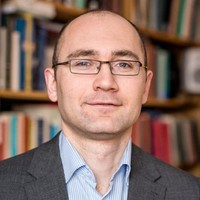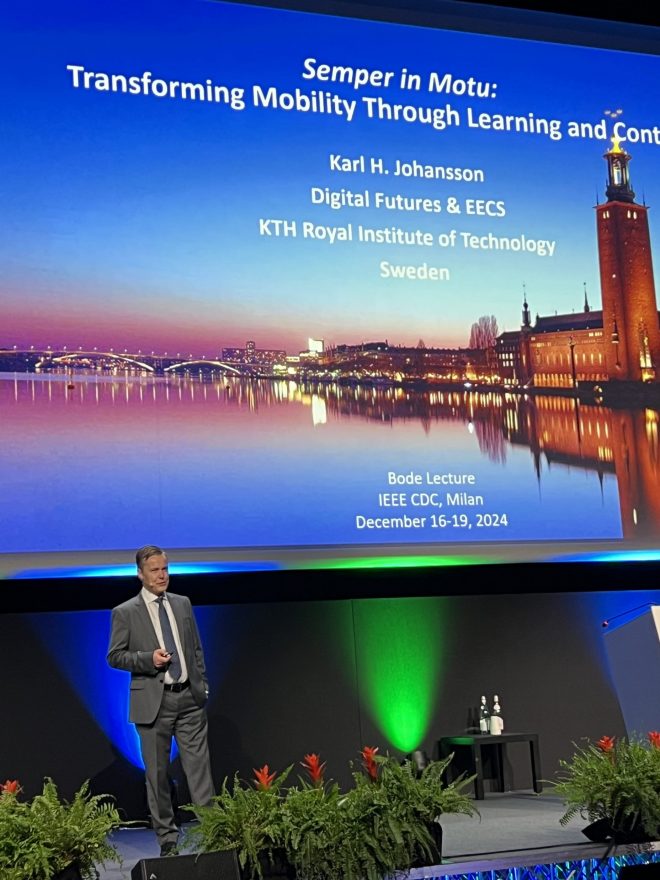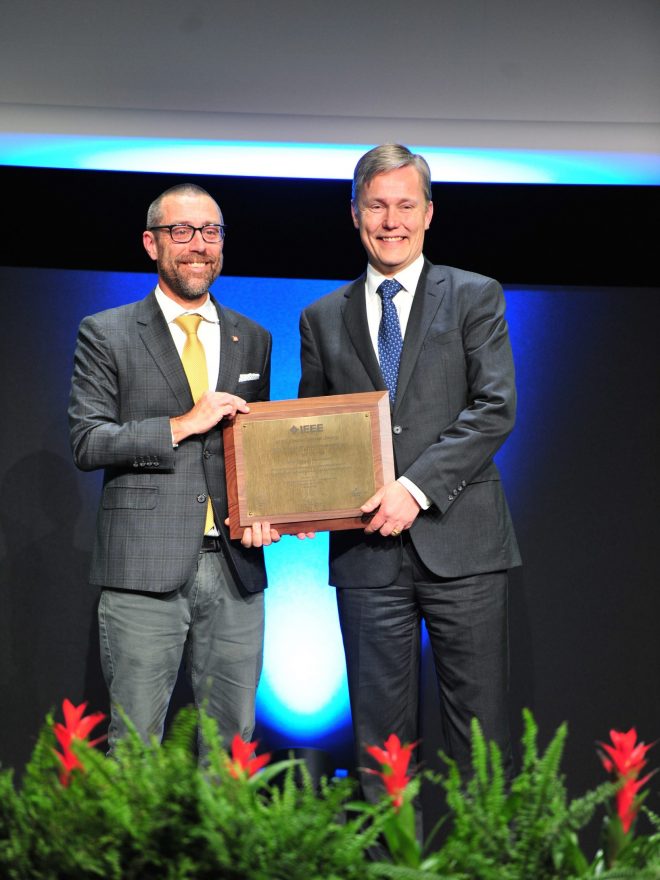Digital Futures has announced three calls – all with Project proposal registration by 4 June 2025 and Proposal submission deadline on 11 June 2025!
Open call for Demonstrator projects
Demonstrator projects aim to disseminate findings in high-impact venues and contribute to industrial or societal transfer. Projects are expected to show novelty, high impact, and wide outreach. Researchers from the Royal Institute of Technology (KTH), and Research Institutes of Sweden (RISE), are eligible to apply for funding under this call. Link to more information
Sixth call for Research Pairs projects
Researchers from the Royal Institute of Technology (KTH) and Research Institutes of Sweden (RISE) are eligible to apply for funding under this call. The Research Pairs Projects call is a funding instrument designed to encourage collaboration between two early-career researchers and to identify new research collaborations that have the potential to evolve into significant scientific endeavors within the next 3-5 years. Link to more information
Fourth call for the Research Pairs Consolidator projects
Researchers from the Royal Institute of Technology (KTH), and Research Institutes of Sweden (RISE) with projects previously funded under the Digital Futures Research Pairs initiative from the third and fourth call are eligible to apply for funding under this call. Link to more information
Digital Futures proudly congratulates former Scholar-in-Residence João Sousa on receiving the distinguished Vasco da Gama Medal from the Portuguese Navy. The award was presented by Admiral Henrique Gouveia e Melo during a ceremony in Lisbon on December 17, 2024.
The recognition highlights Sousa’s exceptional contributions to maritime unmanned systems, including the creation of the REP exercise and the Robotic Experimentation and Prototyping with Maritime Unmanned Systems (REPMUS) exercise, which have elevated the global reputation of the Portuguese Navy.
“I am thrilled to be part of an exceptional group driving innovation and thought leadership,” said Sousa, referencing fellow awardees João Alves, David Burton, and Ian Danbury. “The Portuguese Navy’s motto, ‘Talant de bien-faire,’ is a profound inspiration to us all.”
Congratulations to João Sousa on this well-deserved honor!
Find out more in this interview Exploring the depths with João de Sousa, Digital Futures Scholar in residence and check out this Digital Futures Distinguished Lecture from 25 March 2024 on Maritime robotics and ocean exploration: where are we and where are we going? on Digital Futures YouTube channel.
Text: Johanna Gavefalk
Wendy Ju spent June–December 2024 in Stockholm as a Digital Futures Scholar in Residence, hosted by Professor Barry Brown at Stockholm University. An Associate Professor at Cornell Tech, she specializes in designing intuitive human-robot and human-vehicle interactions. Wendy’s innovative methods and collaborations with global industry leaders aim to make technology more seamless and user-friendly.
Hi Wendy, in June you came to Stockholm as a Digital Futures Scholar in Residence. How did you find out about this opportunity, and what made you decide to come?
– I have been collaborating with Barry Brown on research about people’s interactions with robots in public places. I mentioned to Barry that I was interested in visiting Sweden for my sabbatical, and he suggested the Digital Futures Scholar in Residence Program.
Your research spans automated vehicle interfaces and human-robot interaction. Could you share what initially drew you to these fields and why they remain so important today?
– The common thread in my research interests is interaction—the reciprocal exchange of behavior between people or other actors and agents. I have always enjoyed building machines, and I love watching how everyday people interact in public. What is so interesting to me is how people bring their knowledge and experiences of interacting with other people or with animals to their interactions with things like autonomous cars or robots. I hope my research can help designers of cars and robots take into account how people behave and how they interpret the behavior of these new machine systems.
Collaboration is a key part of your work. What has it been like working with researchers at KTH, Stockholm University, and Linköping University? Have there been any particular projects or insights that have stood out during your time in Sweden?
– Cross-cultural collaboration is a particularly important aspect of my research because we all have blind spots, especially when observing our own culture. Having researchers with different backgrounds but common interests can help us better unpack what is transpiring in day-to-day interactions. What I have really enjoyed in my collaborations with Swedish counterparts is the wide array of approaches and philosophies being brought to bear on the question of designing interactions. There is something very democratic in both the Nordic approach to ethnography and the Scandinavian design ethos, which I am enjoying a great deal.
You’ve worked with industrial giants like Toyota, Spotify, and Volvo. How does your experience collaborating with industry inform your academic research, particularly in early-stage prototyping of automated systems?
– To differing degrees, most industries engage with people, but usually late in the design cycle. They conduct usability testing to ensure the products they design can be operated and safety testing to ensure their products don’t harm people. Very often, early-stage human research is done by marketing to find out what people want or to understand them better. Early-stage prototyping – the idea that you can create a cheap puppet or facsimile of what you are designing and find out how people respond to it before you’ve made anything – is somewhat radical. But it works: it affordably provides insights into what should be built early enough in the product development cycle to yield things that work better, function more safely, and better accommodate people. I find varying degrees of excitement and resistance to this approach, even within the same companies, but over time I think more and more companies are coming around to it.
What have you done in Stockholm so far? Are there any places in Sweden you’re hoping to visit before your residency ends in December?
– I got to enjoy Midsummer at Skansen, visit the Viking Museum, and go boating through the archipelago. I think the things I like best, though, are terribly mundane: riding the subway, watching people enjoying the parks, or seeing how people buy groceries. I feel like I’ve only scratched the surface of everything I’d like to know about Sweden, and already I’m plotting how to return.
Text: Johanna Gavefalk
Digital Futures is delighted to welcome two new members to the Executive Committee. As of January 1, Pawel Herman has assumed the role of Associate Director for Strategic Research, succeeding Viktoria Fodor and her outstanding contributions. Martina Scolamiero has stepped into the role of Associate Director for Seminars & Workshops, following Mario Romero as he transitions to new opportunities.

Pawel Herman is an Associate Professor of Computational Neuroscience and Neuroinformatics in the Division of Computational Science and Technology at KTH Royal Institute of Technology. His research spans multiple intersections of neuroscience and computer science. Recently, his lab has focused on computational modeling of the brain’s cognitive functions (cognitive computational neuroscience) to understand the underlying neural mechanisms and develop brain-inspired neural network models. These models aim to provide a generic neuro-computational framework for next-generation machine intelligence (brain-like machine learning and AI). Additionally, Pawel explores emerging paradigms and challenges associated with the coexistence of human and machine intelligence.
Pawel will serve as the Chair of the Strategic Research Committee (SRC). The SRC is responsible for shaping Digital Futures’ research strategy, identifying new and relevant research areas, prioritizing future project calls, organizing initiatives that foster collaboration among researchers, and ensuring quality control. The committee also includes members nominated by Stockholm University and RISE.
– As Chair of the Strategic Research Committee, I am excited to help shape the research agenda at Digital Futures. By identifying emerging areas and fostering interdisciplinary collaboration, we can drive impactful innovation in digitalization and AI, says Pawel.

Martina Scolamiero is an Assistant Professor in Mathematics, specializing in Geometry and Mathematical Statistics in Artificial Intelligence at KTH Royal Institute of Technology. Since November 2024, she has held the title of Docent in Mathematics.
Her research focuses on Applied and Computational Topology, particularly on defining topological invariants for data analysis, understanding their statistical properties, and applying them in Machine Learning. Martina is also interested in using topological methods in Neuroscience and Psychiatry.
The Digital Futures seminar series offers both high-level seminars, providing insights into research areas related to digitalization, and technical seminars, which highlight cutting-edge results from recent scientific publications. Invited guests, Digital Futures-associated researchers, and postdocs deliver the talks. The seminars are typically hybrid events, broadcast live from the Digital Futures cafeteria.
– Seminars and workshops are vital for sparking new ideas and building connections. I look forward to curating engaging discussions that inspire collaboration and advance research at Digital Futures, explains Martina.
Do you have a speaker proposal?
If you would like to deliver a lecture, recommend a speaker for our weekly seminar or have a suggestion for a distinguished speaker, please submit your proposal by writing an email to Martina at scola@kth.se.
Text: Johanna Gavefalk
Carrie Demmans Epp, a distinguished computer scientist, brings her expertise to the crossroads of applied linguistics, human-computer interaction (HCI), and artificial intelligence. Her work is driven by a singular goal: to empower individuals in their pursuit of knowledge and skill development.
As a Digital Futures Scholar in Residence from August to November 2024, hosted by Associate Professor Olga Viberg, Demmans Epp delved into the transformative potential of large language models (LLMs) in education. Her research focused on using these advanced AI tools to help students manage their learning processes. Through collaborative co-design activities, she reimagined how LLMs could meet the diverse needs of learners, from language students to those requiring tailored support services. Her innovative approach highlights the promising intersection of AI and education, paving the way for more inclusive and effective learning environments.
Hi Carrie, you joined Digital Futures as a Scholar in Residence this August. What motivated you to take on this opportunity, and how does it fit into your ongoing research interests?
– I wanted to work with Olga. Our prior and ongoing research interests are aligned, so I wanted the opportunity to develop a strong collaborative relationship.
Your work spans applied linguistics, human-computer interaction, and artificial intelligence. How do these fields intersect in your research, and what excites you most about working at their crossroads?
– The adoption of AI is limited by the processes through which people access it and integrate it into their existing practices. This HCI focus on AI applications holds great potential, especially given the recent advances in LLMs that have created opportunities to support language learners’ ability to learn how to speak and hold conversations.
During your residency, you’re focusing on using large language models (LLMs) to support students’ learning processes. Could you share more about how you envision these models being repurposed to meet learners’ unique needs?
– The models allow us to provide functionality that wasn’t previously possible.
Co-design is an essential part of your current work with LLMs. How do you involve students and educators in the process, and what insights have you gained so far from these collaborations?
– This is ongoing, so there have been no insights thus far. We ask students to envision the tools they want. This process can involve several techniques, such as sketching and storytelling.
Your residency was a relatively short one, lasting until November. What were the key goals you hoped to achieve during this time, and how do you plan to continue building on this work afterward?
– We have a study planned for April in Japan, where we will be conducting co-design with learners.
Text: Johanna Gavefalk
From September 2024 to August 2025, Dr. Henny Admoni, Associate Professor at Carnegie Mellon University’s Robotics Institute and leader of the Human and Robot Partners (HARP) Lab, joins KTH as a Digital Futures Scholar in Residence, hosted by Associate Professors Iolanda Leite and Jana Tumová. Renowned for her work in assistive and collaborative robotics, Dr. Admoni explores how natural human communication, like eye gaze, can improve human-robot interactions.
With numerous prestigious accolades, including an NSF CAREER grant and funding from industry leaders like Google and Meta, Dr. Admoni has dedicated her career to making intelligent robots safer and more intuitive partners in daily life. During her residency at KTH, she will collaborate with the Division of Perception, Robotics, and Learning to tackle one of robotics’ biggest challenges: ensuring safety in unpredictable human-robot interactions using cutting-edge AI and formal methods.
This interview dives into her inspirations, groundbreaking research, and vision for the future of assistive robotics.
Hi Henny, you arrived in Stockholm in September as a Digital Futures Scholar in Residence. What inspired you to take on this year-long opportunity, and what are you hoping to achieve during your time at KTH?
– As a professor, I have the privilege of taking a sabbatical every seven years to focus on professional development in a new environment. When the time came, I reached out to my hosts, Iolanda Leite and Jana Tumová, to explore spending the year at KTH. I was drawn by the cutting-edge robotics research happening here, particularly in human-robot interaction. My goals for this year are to collaborate on exciting projects, connect with diverse researchers, and gain a deeper understanding of the academic landscape in Europe.
Your research focuses on how natural human communication, such as gaze, can enhance human-robot collaboration. What fascinates you most about this interaction, and how do you see it transforming the way we work with robots?
– I’m fascinated by how humans collaborate so seamlessly in everyday tasks, like cooking a meal together, without needing to explicitly spell out every step. Instead, we rely on nonverbal cues—eye gaze, gestures, body posture—and shared context to coordinate actions. I aim to bring similar capabilities to robots, enabling them to interpret and respond to human cues naturally. This could revolutionize human-robot collaboration by making it more fluid, intuitive, and efficient. Imagine robots that proactively assist without needing constant instructions—this is the future I’m working toward.
One of the challenges you’re addressing during your residency is ensuring safety in human-robot interaction, particularly given the unpredictability of machine learning. Can you share more about your approach to tackling this issue and the potential impact of your work?
– When I think about robots supporting people in homes, offices, or schools, their safety and reliability are paramount. The field of formal methods offers mathematical tools to define and ensure system safety. However, applying these tools to human-robot interaction (HRI) is challenging due to the unpredictability of human behavior and robots trained with machine learning. At KTH, I’m collaborating with researchers to explore how we can provide provable guarantees for robotic behaviors in collaborative settings. For example, we’re trying to enable a robot to accurately monitor its own uncertainty and ask questions when it needs help. This work could pave the way for safer, more trustworthy robots in everyday environments.
You’ve led groundbreaking research through the HARP Lab at Carnegie Mellon and received numerous prestigious grants. How have these experiences influenced your vision for assistive robotics, and what are the biggest challenges still ahead?
– Thank you! I’m fortunate to work with an incredible team at Carnegie Mellon. Together, we’ve tackled diverse questions in assistive and collaborative HRI, like designing robotic arms to aid individuals with upper motor impairments, developing intelligent vehicles to improve driving safety, and creating robots that ask targeted questions to better understand human needs. These experiences have deepened my vision of robotics as tools for empowerment and independence. Looking ahead, one of the biggest challenges is ensuring that robots can generalize their behavior across diverse users and unpredictable scenarios while remaining safe and reliable.
Your residency involves collaborating with researchers in the Division of Perception, Robotics, and Learning at KTH. What has the experience been like so far, and how do you see these collaborations shaping your research?
– Being at the RPL division has been such a pleasure. I’ve had the chance to learn from brilliant colleagues and discover intriguing links between my own work and ongoing research at KTH. In particular, I’m excited to see how our work on safety in HRI evolves through these collaborations. Since arriving, I’ve also participated in division events like the “What’s Cookin’” research symposium, the faculty retreat, and the Christmas lunch, all of which have been wonderful opportunities to engage with the community and have some fun along the way!
Text: Johanna Gavefalk
Digital Futures Director Karl Henrik Johansson has received the 2024 Hendrik W. Bode Lecture Prize. This award celebrates distinguished contributions to control systems science or engineering. Johansson is recognized for his “outstanding contributions to networked control with applications to transportation and automation systems.” The award was presented to him at the 63rd IEEE Conference on Decision and Control Awards Ceremony on 18 December in Milan, Italy. It represents the highest distinction awarded by the IEEE Control Systems Society and is one of the most prestigious international scientific recognitions in the field of control science and engineering.
“Karl Henrik Johansson receiving the Bode Lecture Prize 2024 is a well-deserved recognition of his exceptional contributions to control science and engineering,” says Anders Söderholm, President of KTH Royal Institute of Technology. “His distinguished career is characterized not only by groundbreaking research but also by significant leadership at KTH. This award honors Karl Henrik’s dedication to advancing control systems for the greater benefit of society,” concludes Söderholm.


As part of the prize, Johansson delivered a lecture entitled Semper in motu: Transforming Mobility through Learning and Control at the conference. The talk explored the transformative potential of learning-enabled cyber-physical-human systems, with a focus on how connected vehicles, acting as mobile sensors and actuators, can revolutionize traffic prediction and management on an unprecedented scale. It covered research results achieved by Johansson’s PhD students, postdocs, colleagues, and industrial collaborators, driving advancements in AI and automation for transport systems.
The Institute of Electrical and Electronics Engineers (IEEE) is the world’s largest technical professional organization, with more than 460,000 members. The Hendrik W. Bode Lecture Prize is one of the highest honors in control engineering, awarded by the IEEE Control Systems Society. It recognizes exceptional contributions to control systems science and engineering, with an emphasis on technical merit and societal impact.
Text: Johanna Gavefalk
